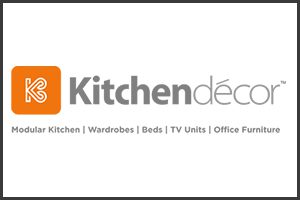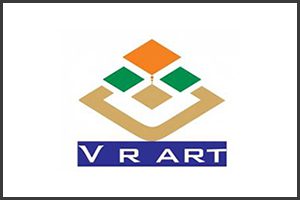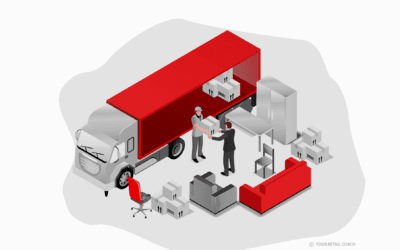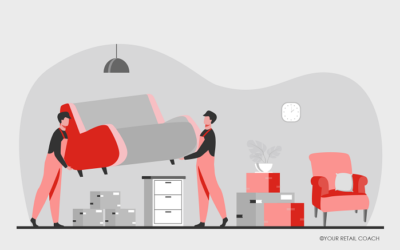Furniture Industry Consulting | Furniture Retail Business Consulting (Online & Offline)
Home Decor | Furnishing | Furniture Consulting
Before getting into the industry and business-related aspects of the furniture market, it is worthwhile to understand the role and need of furniture in a society.
Households are the Biggest Consumers
The biggest consumers of furniture products are households. Furniture occupies an overwhelming majority of space in houses with sofa sets, dining tables and chairs, study tables and chairs, desks, beds, dressers, stools, bookshelves, organizers, benches, nightstands, TV stands, shoe racks, mudroom lockers, etc. If the furniture is removed, a house gets empty and unadorned. Furniture completes a house with its utilities. It makes living supportive, easier, comfortable, organized, and stylish in what otherwise are vacant spaces with walls and ceilings and doors and windows. Offices and hotels/hospitality services fill up the remaining market demand for furniture.
Why we cannot do without Furniture
Furniture plays an important role in residences and commercial institutions. Without a suitable bed, a good night’s sleep is difficult. Without a well-equipped workstation, an employee may not be able to perform his desk job with the bare minimum comfort. A customer will not prefer to stay in a hotel room with an uncomfortable bed.
Overall Problem Statement of the Furniture Industry
The indispensability of furniture in domestic and commercial setups makes it an all-season, high-demand market. But the industry comes with its unique set of challenges placed throughout the supply chain. The various businesses involved in the furniture supply chain are manufacturers, suppliers, assemblers, and retailers.
Bulky nature of Furniture Products
Furniture products are bulky by nature. This creates problems in merchandising, handling and transportation. The problem compounds with physical stores but online retailers also have to pay their warehouse bills. With limited space, businesses have to be specific and strategic with merchandising. Even with favourable demand forecasts, all products cannot be stacked up in stores or warehouses.
From storing and packaging to delivery and/or assembly, the risk of damage to products always remains high. Even a small damage means return or replacement. Such products have to be sent back to warehouses or workshops causing more expenses and more working hours. Investments remain locked with defective products till correction and sale.
Furniture Inventory Management
Custom furniture is an effective, niche-oriented business approach. Unlike in the case of ready-made furniture where the options of customization are limited, in custom furniture, customers can go to great lengths in specifying their needs in terms of design, colour, quality of wood, etc. But in both cases, inventory management poses a big challenge to businesses. For production-based retail businesses or D2C furniture brands, with an increasing degree of differences in customization requests, it becomes difficult to pre-assess the inventory requirements across the furniture manufacturing process. Storing inventory in anticipation also does not help optimize as capital would get blocked for an indefinite period which shall increase the capex and opex. In the case of ready-made furniture, even though customizations are limited within the furniture supply chain process, the unused parts or add-ons get to play the odd man out. Thus, this problem statement needs to be addressed considering the complete furniture value chain to avoid fire fighting situations.
Returns and Replacements
Given the bulky nature of furniture products, especially those made of wood or steel, returns and replacements do not bring a genuine smile despite the best of efforts. In the case of returns, refund of expensive products is a straight loss of sales and stressful for operational liquidity. Replacement saves the order but invokes a repeat of the entire order fulfilment process with the additional task of picking up the defective product from the aggrieved customers.
Challenges in the Brick and Mortar Furniture Stores Model
A huge share of the global furniture market falls in the ambit of the unorganized sector. This means such businesses are yet to be synchronised with the mainstream developments taking place in the industry. Most of these businesses are MSMEs by volume and revenue. Only a handful of local brands operating in the urban centres carry the expertise and financial prowess to aim for scale and expansion.
Many conventional furniture businesses undermine the strategic significance of a strong organization. These businesses exhibit weaker middle-level management. In most cases, the owners are involved in the routine operations and handling of employees. Business owners must be focusing on long-term business goals and vision. A strong middle-level management helps business owners to focus on the future of business and addressing the bigger issues at hand.
Challenges in the Furniture eCommerce Model (Online Furniture Business)
A big underlying challenge of the furniture industry is unsparing to the eCommerce retail businesses as well. It is always cumbersome to handle bulky furniture products irrespective of whether it is carried out by an in-house team or a third-party service provider. Eventually, it is the product that has to move. This weighs heavily even on the eCommerce-based inventory-light business models. Even if there is a potential market in a different city or a country, it also needs to have the required logistical facilities and services.
The function of on-site assembly of furniture has emerged as a tough operational challenge for the startups and largest online furniture retailers and the furniture shop business. From missing parts to lack of furniture shop management system documentation also called as SOPs, customer experience goes for a toss when they have to wait for hours to get their purchase in one piece.
Challenges in the Hybrid Model (Online & Offline)
In the last few years, traditional businesses and new-age online retail furniture startups have started aggressively implementing omnichannel strategies in the furniture market. The hybrid model allows businesses to make choosing and purchasing furniture easier for customers with the aid of eCommerce platforms and technologies or even brick and mortar furniture studios.
But the problem crops up in the supply chain activities and inventory management. The physical problem of the bulkiness of furniture products plagues the hybrid model too. Irrespective of the business model, effective supply chain management in the furniture retail industry is a critical requirement.
Managing inventory for both channels simultaneously is a challenge. Without centralised hubs acting as fulfilment centres and workshops, businesses end up investing heavily in inventory purchase and storage and scattering inventory over transit. The hybrid model calls for a major change in how businesses see their supply chain and inventory management strategies.
How YRC can help as Furniture Business Consultants
Established in 2012, YRC is a boutique retail and eCommerce consulting firm. We design and deliver business solutions for our clients. In furniture business consulting, our service areas include market research, business modelling, furniture business plan development, business strategy, SOPs, organisational structuring, furniture franchise consulting and growth consulting for corporates and family owned furniture stores. We follow processes and engage professional and experienced furniture consultants in service design and delivery.
Within the furniture and home furnishing industry, the sub-verticals that we cater to include indoor and outdoor furniture, home décor, office furniture, premium home furnishings and furniture, affordable furniture, specialised furniture, modular & wooden furniture, kitchen furniture, etc.
Market Research Furniture Industry
 YRC delivers an insightful report comprising action-recommendations for better business and marketing planning. In furniture retailer business consulting, our team of market research experts go into comprehensive levels of market segmentation on the ground of channels of distribution, product lines and product categories, consumer groups, product features, etc. The high degree of segmented view of the target market presents better opportunities to comprehend a market for more effective marketing plan for furniture business. Identifying your niche furniture market is very critical to make yourself stand out in this highly competitive industry. Niche can be related to various factors as follows:
YRC delivers an insightful report comprising action-recommendations for better business and marketing planning. In furniture retailer business consulting, our team of market research experts go into comprehensive levels of market segmentation on the ground of channels of distribution, product lines and product categories, consumer groups, product features, etc. The high degree of segmented view of the target market presents better opportunities to comprehend a market for more effective marketing plan for furniture business. Identifying your niche furniture market is very critical to make yourself stand out in this highly competitive industry. Niche can be related to various factors as follows:
- Niche within furniture product category or a product (example: brand can be known for: chain furniture stores, sofa furniture stores, office furniture, etc) where have an exclusive section for your hero products along with other categories to cross-sell.
- Niche within VAS (Value add services): (example: a subdivision of furniture assembly business, furniture rental business, etc)
- Niche based on target market and product pricing: (example: brand can be know as: luxury furniture store, high end contemporary furniture or a reasonably priced furniture store)
- Niche within furniture material type. (example: wooden furniture store, plastic furniture, metal furniture, leather furniture, jute furniture, etc)
- Niche with furniture manufacturing facility (example: customise furniture or custom-made furniture brand, also called bespoke furniture brand)
- Niche within furniture business model (example: B2C i.e. furniture retail business or B2B i.e. furniture wholesale store, contract manufacturing, corporate sales, etc or D2C i.e. manufacturing and selling directly to end users via online and offline furniture retail channels i.e. online furniture store, brick and mortar furniture shops, online marketplaces, etc)
Thus, after analysing your target market and your strengths, you can develop multiple niches within your business model, which shall make your furniture brand standout from others and at the same time cater to the demand gap within the market.
Furniture Business Model Development
 In business model development, our team of furniture business consultants carries out a careful SWOT analysis and study of the market research report to seek and define a strong UVP. A strong UVP is critical for the sustainability and competitiveness of a business model. After identification of UVP, the team maps the roadmap of creation and delivery of the intended value offering through a network of value chain and internal capabilities. This mapping helps in the later stage of furniture business planning and formulation of the functional strategies.
In business model development, our team of furniture business consultants carries out a careful SWOT analysis and study of the market research report to seek and define a strong UVP. A strong UVP is critical for the sustainability and competitiveness of a business model. After identification of UVP, the team maps the roadmap of creation and delivery of the intended value offering through a network of value chain and internal capabilities. This mapping helps in the later stage of furniture business planning and formulation of the functional strategies.
In furniture industry consulting, various types of business models that we have expertise in include online furniture, furniture retail, furniture manufacturing, furniture D2C, furniture exports, omnichannel furniture, furniture franchising, etc.
Furniture Business Plan Development
 In furniture business plan development, YRC assesses and prepares the financial implications and projections of carrying out the business project or the business idea. Various financial aspects included here are capital requirements, operating expenditure, ROI and break-even analysis, revenue and cash flow projections, purchase planning, and more. The business plan of furniture shop or online furniture store business plan is useful for investor pitch deck and is also meant to serve as a financial action plan and lend financial preparedness.
In furniture business plan development, YRC assesses and prepares the financial implications and projections of carrying out the business project or the business idea. Various financial aspects included here are capital requirements, operating expenditure, ROI and break-even analysis, revenue and cash flow projections, purchase planning, and more. The business plan of furniture shop or online furniture store business plan is useful for investor pitch deck and is also meant to serve as a financial action plan and lend financial preparedness.
Furniture Franchise Consulting

In franchise consulting services, we help clients define their furniture franchise stores expansion strategies, prepare the financial projections and assessments, provide assistance in franchise partner search, draft franchise legal agreements, design and implement SOPs, and establish robust audit processes. It’s also important to evaluate the benefits in franchise vs company owned stores in the furniture business. These services are intended to improve the business management of furniture shops and stores operating under a retail furniture franchise arrangement. Control is a big factor in franchise versus company-owned stores in the furniture industry. Our team of offline and online furniture retail business consultants work in close tandem with our clients for crafting agile business solutions.
SOP for Furniture Business
Most of the operational challenges that businesses encounter in the furniture industry are resolved when SOPs implemented are aligned with the furniture management system. From the handling of bulky products to unpacking and assembly, SOPs simplify complex operational activities. Not just employees, even customers benefit from product SOP manuals. SOP for furniture industry also provide the foundation for automation in business when aligned with furniture retail systems and help define the specifications for the required furniture retail management software. As a part of our furniture business consulting services, in SOP development, our focus is on creating routines, achieving standardisation, lending process orientation, and building a robust furniture retail management system for businesses. These SOPs are also useful as inputs for defining the job description of retail furniture store managers and other employees and also help furniture shop employees to manage efficiently with furniture retailers software. To know more about implementing standard operating procedures click here.
Furniture Store Layout Design
Visiting a furniture store means taking out considerable time from the busy schedule unlike grocery shopping. Very few furniture retailers like ikea furniture retail company have mastered the art of layout planning. Furniture store is not about displaying furniture items but also giving an experience while customers spend time within the furniture store. Thus, a furniture store layout planning goes beyond just placement of goods, but to overcome following challenges:
- Flow of goods & people within the store
- Enhance Customer Experience (CX)
- Keeping customers away from distractions which can entice them to leave (i.e. keeping kids engaged, quick bites to not keep visitors hungry, engaging walkthroughs, etc)
- Go beyond just a shopping destination and become an experiential destination
- In-store signages
- Help desks and checkout counters
- Staff recreation areas. Don’t forget your staff are your internal customers. Their happiness shall be transformed to customer delight.
We have curated a few interesting videos on how Ikea is enhancing CX in the furniture industry. Click on the topics below to view them.
Start Online Furniture Store or D2C Furniture Brand
Starting an online retail furniture business requires meticulous planning within following areas:
- Online Brand Positioning Strategy
- Supply Chain Operations
- Online Sales and Order Management
- Digital Marketing Strategy
- Inventory & Merchandising Planning
- Customer Experience across all touchpoints
- Brand Reputation Management
- Online B2B Sales Strategy
- Cross-border Sales Strategy
- IT Framework and Automation Planning
- After Sales Service & warranty management
The above list is not exhaustive and shall vary depending on your online furniture store business plan. YRC’s professional furniture consultants help D2C brands to gain competitive edge with operational efficiency across all functions within the organisation which eventually helps build trust and safeguard brand reputation which is very critical while building an online furniture brand.
The above list is not exhaustive and shall vary depending on your online furniture store business plan. To know more about “how to start a furniture business” or “how to grow furniture business”, get in touch with YRC furniture business consultants. If you have any furniture business ideas or working on a furniture business plan, get it evaluated from YRC experts to explore the “crawl, walk, run, fly strategy” for your furniture startup business.
Let’s Talk!
FAQs
How to start a furniture business?
Starting a furniture business requires meticulous planning within the following areas. Listing down 11 critical steps to start a furniture brand:
1. Define your furniture brand positioning and target customers
2. Decide the Business Model i.e. B2C Retail, B2B Wholesale, Manufacturing, D2C brand or Omnichannel brand i.e. online & offline presence
3. Develop Business Plan
4. Define Sales & Operations Processes
5. Develop (SOP) Standard Operating Procedures Manual
6. Retail Shop Location Validation & Layout design
7. Merchandise and Marketing Planning
8. Identifying best ERP and softwares for automation
9. UI/UX design for online store
10. Website development
11. Go-to-market marketing planning
If you want to explore the above steps or have queries about “how to start your own furniture line”, then get it touch with YRC Experts to explore solutions
To know more about starting a retail shop or “how to start a furniture store business?”, click here.
How to start a furniture manufacturing business?
Starting a furniture manufacturing business needs technical and operational expertise in following areas:
- Furniture Manufacturing Business Plan to check the financial feasibility, CAPEX , OPEX and ROI
- Product category finalisation i.e. finished products that shall be manufactured
- Capacity planning to decide what shall be built in-house v/s outsourced for contract manufacturing
- Machinery specifications finalisation
- Furniture manufacturing factory layout finalisation
- Define Manufacturing Standard Operating Procedures (SOP) and furniture manufacturing process flow charts
- Go-to-market marketing strategy
- Omnichannel Sales Strategy i.e. Online & Offline across various regions/ countries
How to start a furniture business online? or How to become an online furniture retailer?
Starting an online furniture store needs to be planned with a data-driven approach. Due to high competition within the ecommerce industry, just listing products online and promotional ads spent shall not make a profitable online business. Starting an online furniture business needs panning beyond just website and marketing planning. Listing down 10 areas in sequential order:
- Market Research (Competitor Research, Customer Research, Pricing Research)
- Identifying Niche in furniture business (link)
- Product List and product pricing finalisation
- Developing online furniture store business plan to know the OPEX, CAPEX and breakeven period
- B2B E-commerce strategy (if applicable)
- Furniture supply chain management (including: first mile, mid mile and last mile delivery)
- Website & Mobile App Development
- Developing E-commerce SOPs for Brand Reputation Management
- Brand Launch Strategy
- Digital Marketing Plan
To know more on ecommerce business startup efficient ways. click on below topics:
How to choose the right ecommerce platform
Tips to Build Your E-Commerce Website
ECommerce Inventory Management
Steps to Start B2B E-Commerce Business
To know more on “how to start a furniture store online” get in touch with YRC Ecommerce Experts to discuss your furniture business idea.
How to expand furniture business?
Expansion of furniture business requires meticulous planning across following areas:
- Organisational Restructuring
- Developing Middle Level Management
- Developing SOPs across all functions
- Expansion with Franchising
- Building an Omnichannel Brand Presence (i.e. Online & Offline)
- B2B E-commerce
To explore more about “how to grow a furniture business?” Get in touch with an YRC Expert. Click Here.
How to develop a furniture store business plan?
Business Plan acts like an insurance to your investment, as it shall guide you on the financial viability of a new business. Business Plan must include or consider the following parameters:
- Sales Channels & Business Model Type (Retail shops, online store or both & B2C, B2B or D2C business model)
- Target Group and Brand Positioning (Luxury, premium, affordable, etc)
- Product Categories and Inventory Range Plan
- In-house Processing (if any) i.e. manufacturing, assembly, refurbishing, re-branding, etc
- Procurement Plan i.e. Domestic/ International sourcing and costings
- Marketing budgets as per marketing plan
- Organisational structure to assess HR budgets
- Sales & Operations plan to assess the OPEX
- Infra & IT Architecture Plan to assess the CAPEX
Furniture shop business plan must be developed or verified by a furniture business expert i.e. an existing furniture entrepreneur or a furniture business consultant.
To know more about the furniture business plan, talk to YRC Business Plan Consultants today !!!
Case Studies
Related Blogs
The Right Approach to Start an eCommerce Business
Ready-to-go startup eCommerce consulting services Starting out with an online business is certainly not easy as it sounds and does involve a lot of planning, preparation along with a sound understanding of the ground realities of the business. An entrepreneur who is...
How a Luxury Furniture Retail Brand can Enhance their Customer Journey?
Reading Time: About 4 minutes If you are in the business of furniture retail as a premium or luxury brand, then you must focus on maintaining the same in terms of customer experience as well, as an integral part of your offering. Customers will often drop by your...
How to write Standard Operating Procedures for Furniture Showroom
Archaeological researches have estimated that human beings began carving furniture using wood, stone and animal bones around 30,000 years back. In the present day context, furniture refers to any movable object which can support various human activities like sitting,...











We work only for Visionaries.